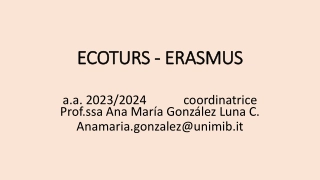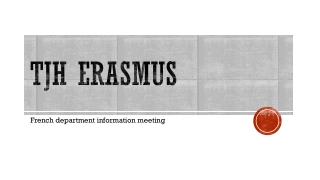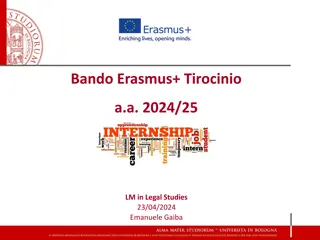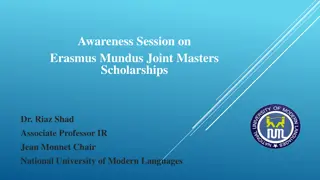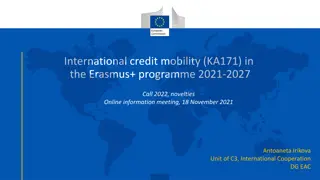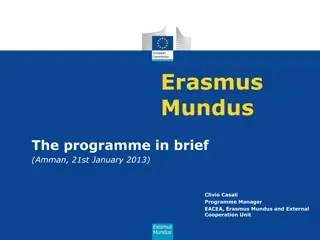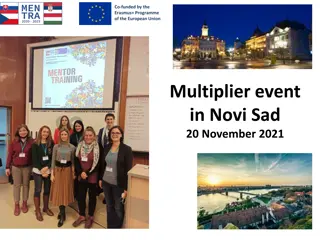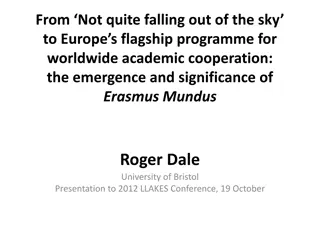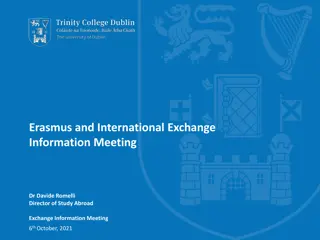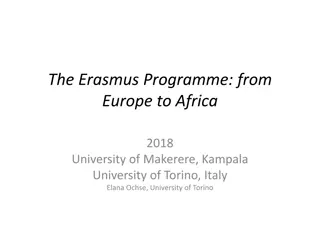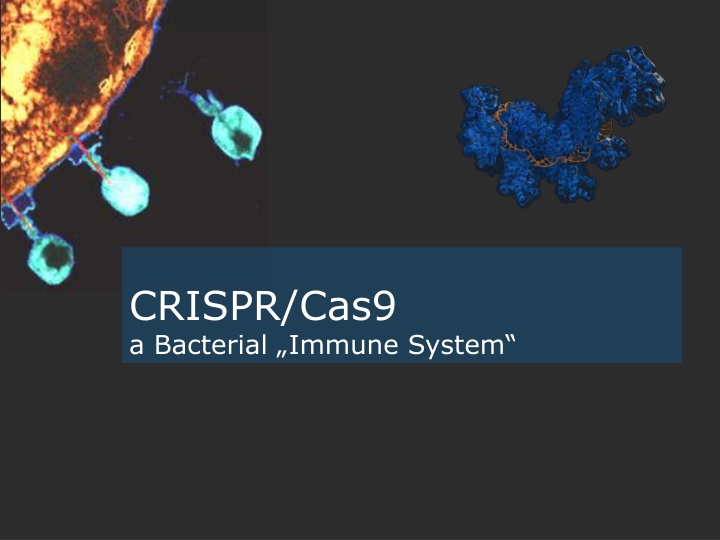
CRISPR/Cas9 Bacterial Immune System and Viral Defense Mechanisms
Unlock the world of CRISPR/Cas9, a fascinating bacterial immune system essential for defense against viruses. Explore the significance of bacterial defense systems, the staggering population of viruses on Earth, known defense mechanisms in prokaryotes, and the intriguing history of CRISPR exploration. Discover how CRISPR/Cas systems in nature help bacteria resist phage infections.
Download Presentation

Please find below an Image/Link to download the presentation.
The content on the website is provided AS IS for your information and personal use only. It may not be sold, licensed, or shared on other websites without obtaining consent from the author. If you encounter any issues during the download, it is possible that the publisher has removed the file from their server.
You are allowed to download the files provided on this website for personal or commercial use, subject to the condition that they are used lawfully. All files are the property of their respective owners.
The content on the website is provided AS IS for your information and personal use only. It may not be sold, licensed, or shared on other websites without obtaining consent from the author.
E N D
Presentation Transcript
CRISPR/Cas9 a Bacterial Immune System
Why do bacteria need a defense system against viruses? How high do you guess is the total population of viruses on earth? A: 1016 (10 quadrillion) B: 1022 (10 sextillion) C: 1025 (10 septillion) D: 1031 (10 nonillion)
Why do they need a defense system? World population of viruses is estimated to be 1031 10 000 000 000 000 000 000 000 000 000 000 106 103 109 100 1018 1012 1024 1015 1027 1021 1030 trillions units millions quintillions nonillions septillions octillions thousands billions sextillions quadrillions This is ten times higher than the number of prokaryotes (like bacteria) on earth. Without a defense system bacteria would become extinct.
Known defense Systems in Prokaryotes 1. Restriction enzymes are endonucleases which can destroy viral DNA E.g. EcoRI The first restriction enzyme isolated from E. coli Has the recognition site GAATTC and cuts to produce sticky ends. NNNN G A A T T C NNNNN EcoRI NNNN C T T A A NNNN G A A T T C NNNN NNNN C T T A A G NNNNN G NNNN
History of Exploration Explored: Origins of CRISPR - sequences are debris of phage DNA Francisco Mojica und Ruud Jansen Yoshizumi ISHINO 1987 1995 2002 2005 Clustered Regularly Interspaced Short Palindromic Repeats Explored repeating sequences in E. Coli DNA Explored tandem repeats in ocean bacteria First named those repeated sequences CRISPR
History of Exploration Molecular mechanism of Cas9 (CRISPR associated) Emmanuelle Charpentier Jennifer Doudna Virginijus ik nys Eugene Koonin Feng Zhang 2006 2012 2012 2013 First proposed CRISPR/Cas as adaptive immune system CRISPR/Cas from Staph. thermophilus is guided to target DNA in E. coli CRISPR/ Cas targeting system also functions in eukaryotes crRNA and tracrRNA together guide Cas9 to target DNA in E. coli
CRISPR/Cas in Nature CRISPR gene locus is found in 70% of bacteria and in all Archae. CRISPR gene locus contains DNA repeats and spacers identical to phage DNA). The gene products of the CRISPR locus are used for a mechanism, called CRISPR/Cas System, which makes bacteria resistent against phage infections.
Principle of defense by CRISPR/Cas-System 1. Prokaryote inserts virus DNA as a spacer in the CRISPR gene locus. 2. In a second infection with the same virus foreign DNA will be destroyed by an enzyme. 3. Viral Spacer-DNA remains in the genome of the bacteria ( immunologic memory )
CRISPR-Gene locus of a Bacteria I repeat spacer repeat spacer repeat spacer leader CRISPR gene locus leader = Promoter / Transcription start of CRISPR-Region repeat = palindromic sequences with identical length of 23 47 bp (depending on bacteria, containing 2 250 palindromic repeats) Spacer = Sequences identical to phage DNA, with a length of 21 72 bp (known since 2005)
CRISPR Gene Locus of a Bacteria II cas 7 cas 9 cas 8 CRISPR gene locus CRISPR-associated genes Cas Genes (CRISPR-associated genes): coding for enzymatic protein compounds of CRISPR defense system
Phases of Immune Response by CRISPR/Cas-System 1. Immunization Uptake of foreign DNA and insertion of foreign DNA as a spacer in the genome of the bacteria 2. Expression und Processing Transcription of CRISPR Locus to CRISPR RNA (crRNA) 3. Interference Destruction of the invasive virus DNA by the Cas enzyme
1. Immunization Phase I Adsorption phase (virus binds at the cell wall) Infection phase (virus inserts its DNA into the host cell)
1. Immunization Phase II Insertion of parts of DNA from the attacking phage into the CRISPR gene locus as a Spacer. Viral DNA (Proto-Spacer) Prokaryote CRISPR Locus extended by a spacer
1. Molecular Mechanisms of the Immunization Phase It does not matter whether the new spacer sequence is coding or non-coding DNA. The viral DNA sequence will still be targeted for cutting. Viral DNA Protospacer PAM The spacer DNA of the virus is designated as a Protospacer Short (3 5 bp) sequences serve the Cas-Enzymes as recognition points Sequences are called PAM (protospacer adjacent motifs), commonly NGG the PAM sequence does not appear in the spacer-DNA on the plasmid (otherwise Cas9 would digest the bacterial DNA)
1. Molecular Mechanism of Immunization Phase Precise mechanism of insertion is unknown The new spacer-DNA is inserted directly in the neighborhood of the Leader DNA repeat spacer repeat spacer repeat spacer leader New spacer Spacers inserted in previous infections
2. Expression and Processing Phase Gene expression is continous defense system is working all the time CRISPR DNA First: transcription of CRISPR DNA Locus to pre- crRNA transcription pre-crRNA Hairpin structure of palindromic repeat-RNA on both sides of the Spacer Spacer RNA Second: Processing by Cas- proteins to completed crRNA: each spacer is connected to a functional crRNA crRNA
3. How can RNA bind to a complementary sequence in double-stranded DNA? HOOGSTEEN basepairing: a third base pair binds to WATSON-CRICK basepairs At Hoogsteen basepairs, only two H-bridges are built WATSON-CRICK Basepairs HOOGSTEEN Basepairs Phosphors ure Ribose CH CH N H H Phosphors ure Cytosin C C C C + Ribose O N N H N C O H H C N Uracil H H H O H N N H O O C C C C CH3 N N C N H H N C C N N CH H C H C C C C CH C C C CH N N N O N H H N N H O N Desoxyribose Desoxyribose Desoxyribose Desoxyribose Phosphors ure Phosphors ure Phosphors ure Phosphors ure Adenin Cytosin Thymin Guanin
3. Hydrolysis of Foreign DNA R R After building RNA- DNA complex, Cas9 makes a double-strand cut in the DNA by hydrolysis of the ester bonds in the DNA back bone close to the PAM- Sequence O O O- O- H2 H2 N P P O O N N N N N O O N N N N H25 C C H25 O O H H C C CH CH2 CH2 CH CH CH O O O O O- O- NH NH P P O O O O O O N N H2 C C H2 O O H H C C CH CH CH2 CH O CH O P CH2 O O O- NH NH O O- P OH O O O OH N N O CH2 H2 C O O H C H C CH CH CH2 CH 3 O O CH2 CH 3 R R
3. Summary Recognition of foreign DNA: Via complementary crRNA Cleavage of foreign DNA: Cas9 cuts close to PAM sequence (3 nucleotides upstream) PAM sequence does not appear in the CRISPR locus on the bacterial DNA; if it did, Cas9 would hydrolyze bacterial DNA and the bacteria would die. PAM sequence for Cas9: 5 -NGG- 3
Why do Phages Still Exist on Earth in Spite of this Effective Defense Mechanism? Mutations in protospacer regions of viral DNA/RNA complementary crRNA can`t bind Viral proteins inhibit the effector complex interference does not start Viruses have their own CRISPR/Cas system with it they can destroy the bacterial locus of CRISPR/Cas-system; e.g.: ICP1-bacteriophage and Cholera bacteria
Publication History crRNA and tracrRNA join to form gRNA. gRNA targets specific DNA sequence for a well-aimed cut by means of Cas9. Jennifer Doudna 28. June 2012 (Science) Kavli Prize 2018 Nobel Prize for Chemistry 2020 Emmanuelle Charpentier April 2012 (Cell, submitted but rejected) May 2012 (PNAS) resubmission accepted, published September 2012 Kavli Prize 2018 Meaning of the PAM-sequence for cutting. 20 nt crRNA suficient for the cut. Virginijus ik nys
Patent Rights $$$$$ Feng Zhang showed 7 months later that CRISPR/Cas9 functioned not only in bacterial, but also in eukaryotic cells. Zhang filed a patent on his findings, as did Doudna and Charpentier. Feng Zhang 2014 the US Patent Office declared Zhang the holder of the patent rights. Doudna and Charpentier submitted a complaint against this decision. 2017 decision in favor of Zhang: the application to eukaryotes was not obvious. 2022 decision gives Zhang eukaryotes, Doudna/Charpentier prokaryotes. Legal battle continues...


